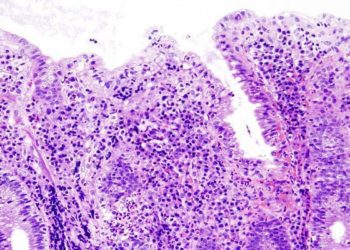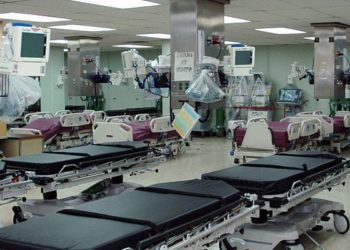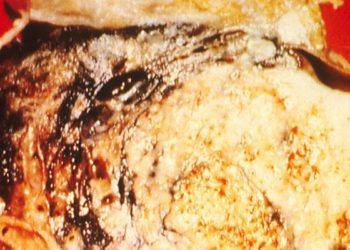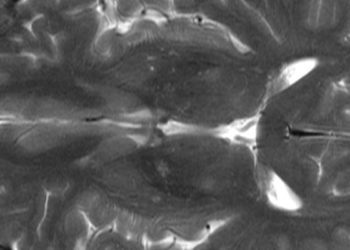Nanobubble surgery could eliminate residual tumors and increase survival [PreClinical]
1. In mice, plasmonic nanobubbles (PNBs) specifically targeted and killed cancer cells without damaging normal cells or surrounding tissues.
2. Tumor recurrence was reduced and survival increased in animals that received PNB-guided surgery.
Evidence Rating Level: 1 (Excellent)
Study Rundown: After tumor resection, residual cancer cells are often left behind. These microtumors increase the risk of recurrence and currently cannot be removed without damaging surrounding normal cells. The authors previously developed PNB technology: antibody-coated gold particles were taken up by cancer cells, absorbed a near infrared laser pulse, and converted the energy into heat to form damaging vapor nanobubbles. Here, the authors applied PNBs to detect and eliminate microtumors.
Head and neck squamous cell carcinoma (HNSCC) cells were used as a model due to their high incidence of recurrence from leftover cells. When they were implanted into a chicken breast (a model of solid tissue), the number of PNBs formed was proportional to the number of injected cells. HNSCC cells were then injected into mice, and the location of PNB formation was detected to be located only within the cancer cells. There was no damage to the irradiated tissue, demonstrating the selectivity of the PNBs. The authors then mimicked surgical conditions by resecting the primary tumors in these mice and leaving behind both resectable and unresectable microtumors. PNB-guided surgery delayed tumor recurrence and improved survival in unresectable microtumors. In the resectable microtumors, no recurrence and a 100% survival rate were observed. Cancer cells were specifically targeted, with normal cells being unharmed.
Since the use of gold colloids is currently clinically validated, this nanosurgery has the potential to greatly improve the survival of cancer patients. Human trials would be the next step to making this a widely used component of cancer therapy.
Click to read the study in Nature Nanotechnology
Relevant Reading: Gold nanoparticles in breast cancer treatment: Promise and potential pitfalls
In-Depth [animal study]: To generate PNBs, 60 nm gold spheres were conjugated to the chemotherapeutic antibody Panitumumab. HNSCC cells internalized these particles through receptor-mediated endocytosis, a process characteristic of cancer cells. Upon stimulation with a 782 nm, 30 ps laser pulse, the accumulated gold particles formed PNBs. PNB generation was assessed using optical scattering and acoustic methods.
In an initial in vitro experiment, HNSCC cells were injected at a 1 mm or 3-4 mm depth in chicken breasts to mimic surgical conditions in solid tissue. The number of PNBs detected was proportional to the number of cancer cells injected. Gold-pretreated or untreated (intact) HNSCC cells were then injected into mice. PNBs only formed in the pretreated cells, with intact cells emitting no acoustic signals. Upon laser stimulation, no damage was incurred on the irradiated tissue. In addition, despite cancer cell death, the surrounding normal cells were unharmed.
Since the first in vivo experiment used pretreated cancer cells, typical surgical conditions were mimicked in mice. After implantation of a 5 mm tumor, it was subsequently removed leaving either a resectable or unresectable microtumor. Gold nanoparticles were then injected and only detected within tumor cells. In mice with unresectable microtumors, although lethal PNBs were not produced in all cancer cells, there was still a decrease in tumor recurrence as well as a 2-fold increase in survival. In mice with resectable microtumors, laser pulses were continually administered until no more PNBs were detected. This technique resulted in a lack of tumor recurrence and 100% survival over 63 days.
Image: PD
©2016 2 Minute Medicine, Inc. All rights reserved. No works may be reproduced without expressed written consent from 2 Minute Medicine, Inc. Inquire about licensing here. No article should be construed as medical advice and is not intended as such by the authors or by 2 Minute Medicine, Inc.





![Nanoparticle delivery of aurora kinase inhibitor may improve tumor treatment [PreClinical]](https://www.2minutemedicine.com/wp-content/uploads/2016/02/20541_lores-75x75.jpg)



